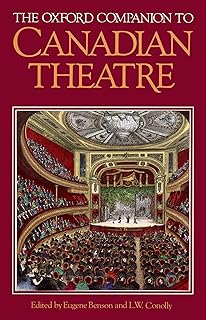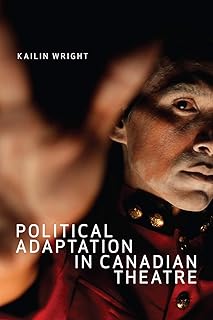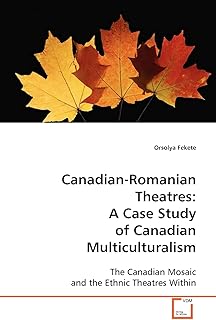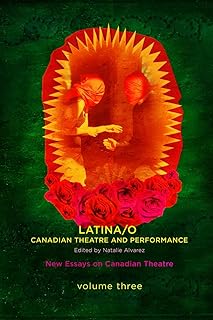Canadian theatre has been shaped by a collection of influential plays that have left an indelible mark on the industry. In an excerpt from The Book of Lists, renowned figures Daniel Brooks and Daniel MacIvor present their selection of essential Canuck theatre works. As leading actors, playwrights, and directors, their choices reflect a deep understanding of the transformative power of theatre.
When compiling their list, Brooks and MacIvor sought plays that had not only impacted their own artistic journeys but had also resonated with a broader audience. They focused on works that had pushed boundaries, sparked conversations, and represented significant milestones in Canadian theatre history. The criteria for inclusion were stringent, with only plays aged at least a decade making the cut.
The selection process was not without its challenges. With a plethora of outstanding works to choose from, narrowing down the list to just 14 plays was a daunting task. However, the duo persevered, driven by a desire to showcase the diverse range of talent that had contributed to the rich tapestry of Canadian theatre.
One standout entry on their list is “Fortune and Men’s Eyes” by John Herbert, a groundbreaking exploration of homosexuality and violence within a men’s prison. This play, which originated in 1964, defied societal taboos and shed light on issues that were often shrouded in silence. Herbert’s bold approach paved the way for a new era of storytelling in Canadian theatre.
Another pivotal work highlighted by Brooks and MacIvor is “Les Belle-Soeurs” by Michel Tremblay, a play that marked a turning point in Quebec theatre. Tremblay’s portrayal of working-class characters with depth and respect signaled a departure from traditional narratives, ushering in a wave of change that reverberated throughout the industry.
David Freeman’s “Creeps” also earns a spot on the list for its groundbreaking depiction of individuals with disabilities. By bringing stories of marginalized voices to the forefront, Freeman challenged societal norms and sparked important conversations about inclusion and representation in Canadian theatre.
George Luscombe’s “Ten Lost Years” stands out for its innovative approach to storytelling, drawing inspiration from oral histories of the Great Depression. Through a blend of narrative and music, Luscombe crafted a poignant theatrical experience that resonated with audiences across Canada.
David French’s Mercer Family Play Cycle, a series of works exploring themes of family, love, and politics, showcases the enduring power of storytelling rooted in personal history. French’s evocative characters and poignant narratives have solidified his place as a master of Canadian theatre.
“Maggie and Pierre” by Linda Griffiths and Paul Thompson offers a unique perspective on Canadian politics, delving into the complexities of a high-profile relationship with wit and insight. Griffiths’ portrayal of multiple roles challenges traditional gender norms, highlighting the transformative nature of theatrical storytelling.
Judith Thompson’s “The Crackwalker” boldly confronts societal issues with raw honesty, drawing from the playwright’s experiences as a social worker. Through its unflinching portrayal of human frailty and resilience, the play pushes boundaries and challenges audiences to confront uncomfortable truths.
Robert Lepage’s “Dragon Trilogy,” a sprawling epic spanning generations and cultures, showcases the visionary storytelling that catapulted him to international acclaim. Lepage’s ambitious narrative weaves together disparate lives, offering a panoramic view of human experiences.
Blake Brooker’s “Ilsa, Queen of the Nazi Love Camp” stands out for its satirical and original approach to storytelling, blending elements of B-movies and cabaret traditions to create a provocative and engaging theatrical experience. Brooker’s bold narrative choices challenge audiences to question conventional norms and expectations.
Joan MacLeod’s “Toronto, Mississippi” delves into the complexities of mental disability and family dynamics with a lyrical and tender touch. Through her nuanced characters and empathetic storytelling, MacLeod invites audiences to explore the transformative power of resilience in the face of adversity.
Morris Panych’s “7 Stories” offers a whimsical and provocative take on contemporary Canadian theatre, pushing the boundaries of form and tone. Panych’s ability to blend cynicism with whimsy has solidified his reputation as a leading voice in the Canadian theatrical landscape.
Tomson Highway’s “Dry Lips Oughta Move to Kapuskasing” challenges conventional narratives with its irreverent and refreshing storytelling. Highway’s use of humor as a tool for social commentary underscores the transformative power of laughter in addressing universal struggles and inequalities.
Trey Anthony’s “‘da Kink in My Hair” offers a vibrant and relatable exploration of black women’s experiences in a Toronto hair salon. Anthony’s dynamic storytelling weaves together humor and heart, creating a poignant and engaging narrative that resonates with audiences.
As Brooks and MacIvor’s curated list demonstrates, Canadian theatre is a vibrant and diverse landscape shaped by bold storytellers who have dared to push boundaries, challenge norms, and spark important conversations. These essential plays stand as testaments to the enduring power of theatre to provoke, inspire, and transform both artists and audiences alike.
📰 Related Articles
- Youth Theatre Festival Showcases Local Talent and International Flavor
- Xbox Game Pass: Diverse Selection of Blockbuster and Indie Games
- Wilmot Works It Out: Modernizing Jigsaw Puzzles for All Ages
- Wedding Cakes: Edible Works of Art Symbolizing Love and Joy
- Verstappen and Russell Set for Thrilling Showdown in Canadian Grand Prix






